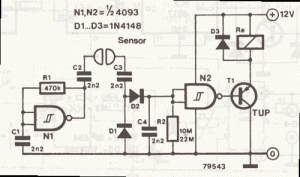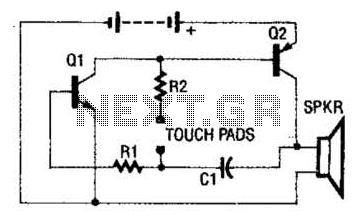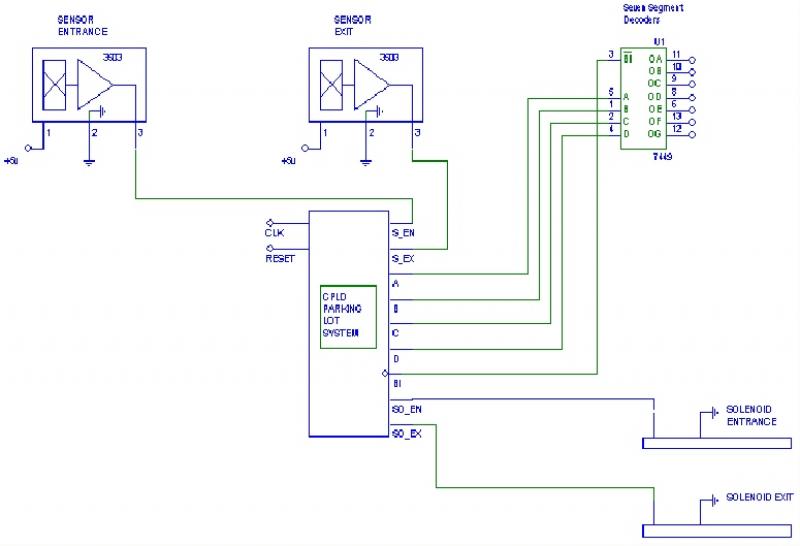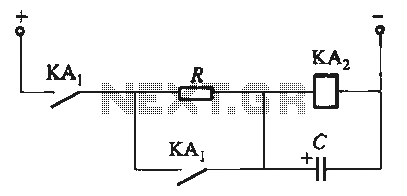
Liquid detector water sensor circuit

This is a straightforward liquid detector that utilizes a relay to activate an evacuation valve. It can be employed for water or any conductive liquid.
The liquid detector circuit operates by leveraging the conductivity of liquids to trigger a relay. The primary components of the circuit include a pair of conductive probes, a relay, a resistor, and a power supply.
When the probes come into contact with a conductive liquid, such as water, the liquid completes the circuit, allowing current to flow through the probes. This current is typically routed through a resistor to limit the amount of current that reaches the relay, protecting it from potential damage.
Once sufficient current flows through the probes, the relay is activated, which can then control a larger load, such as an evacuation valve. The relay acts as a switch that can open or close the valve based on the presence of liquid.
To enhance the reliability of the circuit, it is advisable to include a diode in parallel with the relay coil. This diode serves as a flyback diode, which protects the circuit from voltage spikes generated when the relay is de-energized.
The power supply for the circuit can vary based on the relay specifications, but it is essential to ensure that it matches the relay's voltage rating. The entire setup should be housed in a waterproof enclosure to prevent any short circuits or damage from the liquid being detected.
Overall, this liquid detector is a simple yet effective solution for monitoring the presence of conductive liquids and can be adapted for various applications where liquid detection is essential.This is a very simple liquid detector that use a relay to open an evacuation van. You can use it for water or any liquid that conduct electricity. Use any. 🔗 External reference
The liquid detector circuit operates by leveraging the conductivity of liquids to trigger a relay. The primary components of the circuit include a pair of conductive probes, a relay, a resistor, and a power supply.
When the probes come into contact with a conductive liquid, such as water, the liquid completes the circuit, allowing current to flow through the probes. This current is typically routed through a resistor to limit the amount of current that reaches the relay, protecting it from potential damage.
Once sufficient current flows through the probes, the relay is activated, which can then control a larger load, such as an evacuation valve. The relay acts as a switch that can open or close the valve based on the presence of liquid.
To enhance the reliability of the circuit, it is advisable to include a diode in parallel with the relay coil. This diode serves as a flyback diode, which protects the circuit from voltage spikes generated when the relay is de-energized.
The power supply for the circuit can vary based on the relay specifications, but it is essential to ensure that it matches the relay's voltage rating. The entire setup should be housed in a waterproof enclosure to prevent any short circuits or damage from the liquid being detected.
Overall, this liquid detector is a simple yet effective solution for monitoring the presence of conductive liquids and can be adapted for various applications where liquid detection is essential.This is a very simple liquid detector that use a relay to open an evacuation van. You can use it for water or any liquid that conduct electricity. Use any. 🔗 External reference





